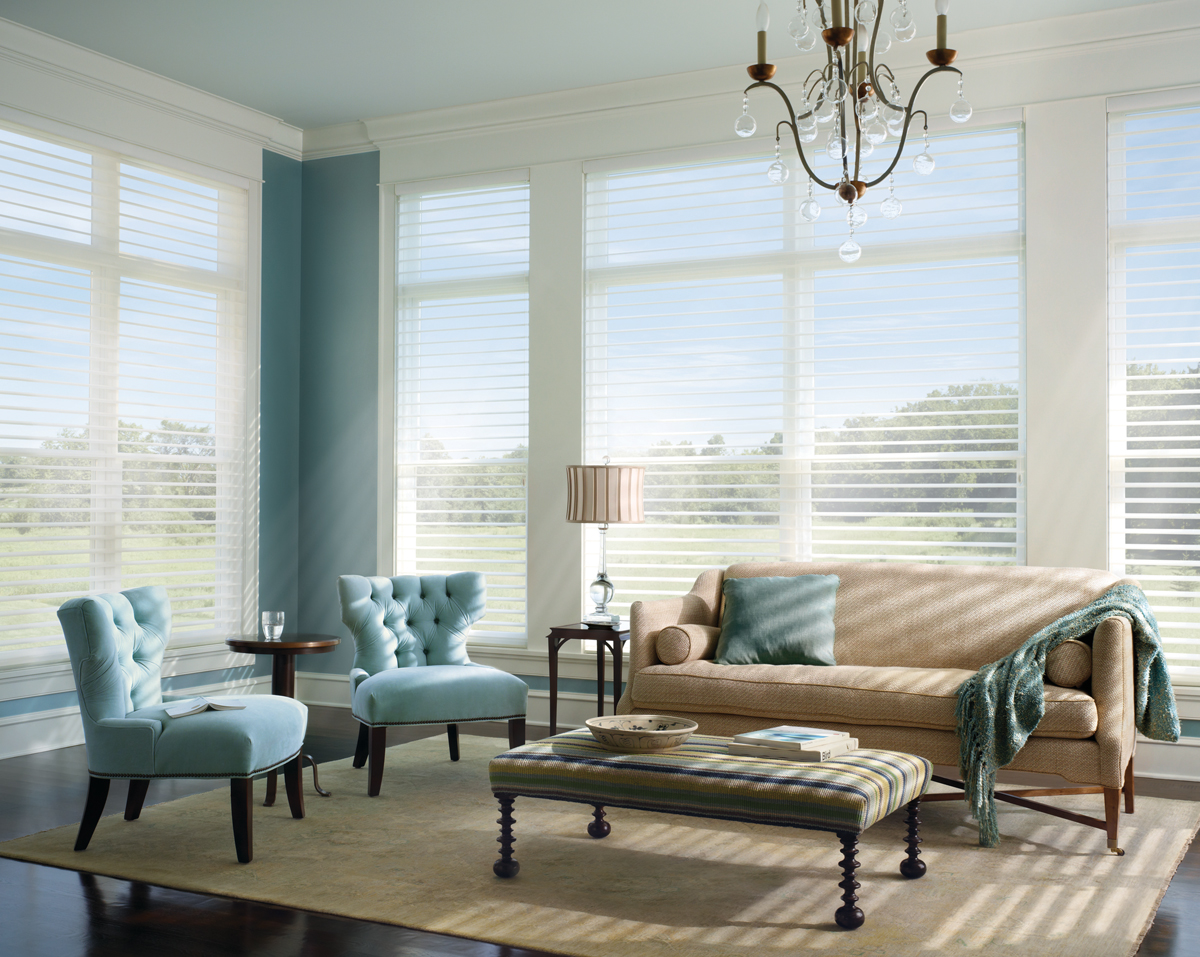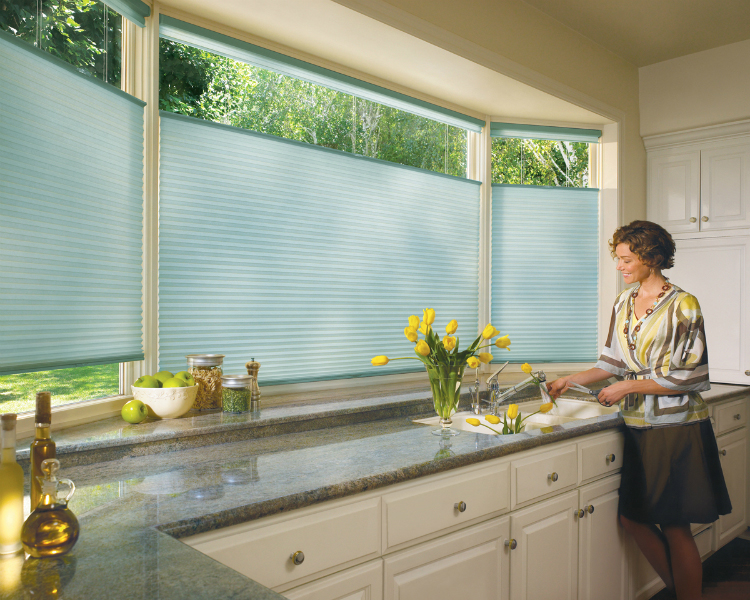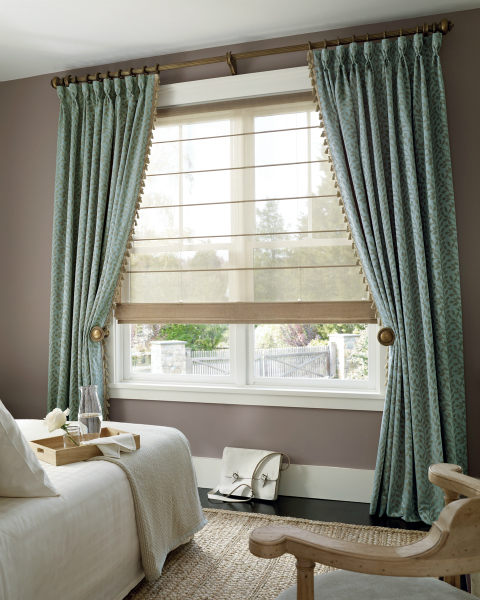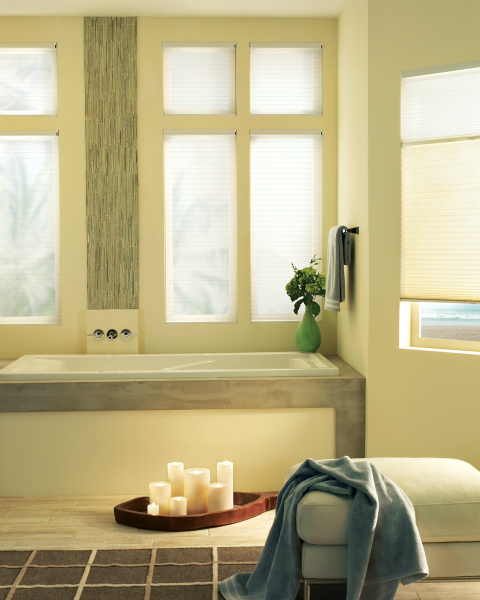Temperature Control:
Different areas of your house have different temperature needs, and your windows have a lot to do with that! Windows to the south soak up the sun, making certain rooms uncomfortably hot in the summer or during certain times of day. Window with northern exposure can feel too cool, especially during the winter. And did you know that windows are one of the greatest contributors to energy loss in homes? The more windows you have, the more difficult these problems become.
Thankfully, the right window coverings can help control room temperatures and greatly reduce energy costs. No matter what temperature control issue you’re dealing with, the solution is just a window treatment away:
It’s too hot!The climate in Wilmington, NC can be unforgiving, especially during the hot and humid summer months. Your home should offer relief and refuge, not more of the same. To keep rooms cool in Southern climates, vertical and horizontal window blinds are a great choice since the slats can be easily adjusted to control light and ventilation. According to Energy.gov, highly reflective blinds can reduce heat gain by around 45% when closed. If you prefer the look of curtains, you’re in luck – certain drapery fabrics keep rooms cooler in the summer, in part because their pleats and folds lose heat through convection.  Silhouette® window shadings with UltraGlide® by Hunter Douglas are a beautiful alternative to traditional sheer curtains. |
It’s too cold!You may have made it through August, but you’re not free from temperature control issues just yet, especially if live on any of our area beaches like Wrightsville Beach, Carolina Beach or on one of or the islands like Bald Head Island or Oak Island. Winter can be just as cruel as summer, with freezing nights, chilly winds, and bitterly cold mornings. The honeycomb design of cellular shades offers an insulating barrier between your window and your room; light-filtering shades diffuse the light while insulating your room in the winter without restricting natural light from flooding the room.  Duette® honeycomb shades with LiteRise® by Hunter Douglas can be ordered in a wide range of colors for every room in the house, but the back sides of the shades are always a neutral white, keeping the outside of your house looking crisp and uniform. To keep your home warm and toasty despite the frigid forecast, Roman shades and Vignette shades provide great insulation, acting as “blankets” over your windows when lowered. Plantation shutters can also be good insulators when the louvers are tilted shut, due to the thickness of the materials used in their construction. If you’ve got draperies, make sure to close them tightly at night. This simple practice can reduce heat loss by up to 10%. |
It’s too drafty!You fiddle with your thermostat and get your home to the ultimate level of coziness when, suddenly, a cool draft snakes around your shoulders, sending chills down your spine. This is a common problem, especially in older houses or poorly insulated homes. To combat the dreaded draft, dress your windows for the season. When winter arrives, switch out lighter summer curtains for heavier drapes, preferably in something lush and rich, such as velvet or heavy linen. Just like pulling a favorite sweater over your head, these fabrics will help block wayward drafts from dropping in.  Design Studio™ Roman Shades with EasyRise™ cord loop curtains by Hunter Douglas provide privacy during the day while still allowing you a view from your window on the world. |
The room is either too warm or too cool; it can’t make up its mind!Especially in the Spring and Fall, people in Wilmington like to say: “If you don’t like the weather, wait five minutes. It’ll change.” On those days when the weather swings from one extreme (cool mornings) to the other (scorching hot afternoons), window treatments can help maintain a steady environment in your home. Honeycomb shades are one of the smartest options for these situations. The cellular design traps a layer of air and acts as a buffer between the window and the room. This unique insulating design keeps it cool in the summer and warm in the winter, providing year-round flexibility. If you want extra insulation, double cells are available.  Applause® honeycomb shades PowerRise® 2.1 with Platinum™Technology by Hunter Douglas eliminates a big problem in bathrooms–reaching over the tub to lower the shade when you are in the buff! Looking for other options? Just as they insulate rooms against the cold, Roman shades and Vignette shades can also reduce heat. And, of course, down South, one of the classic cooling insulators are Plantation shutters (when the louvers are tilted shut). |
Are you ready to get your rooms just right?Schedule a free consultation and one of our window coverings experts will help you determine which solutions works best for controlling temperatures and reducing the energy bills in your home or office. |